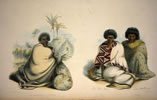Importance of visitors’ views
Living in a small country far from the centres of Western civilisation, New Zealanders have always been highly sensitive about the views of visitors from larger societies on their land and society. English commentator Austin Mitchell noted that a visiting Pom (Englishman) would be ‘asked a thousand times how you like the country; two thousand times if you’ve already left the airport tarmac’.1
Word from on high
In the late 19th century, Canterbury politician Edward Wakefield observed that ‘when any famous writer undertakes to give the world an account of the colonies from his own observation, all good colonists await the publication of his book with feverish impatience, and when it appears each of them takes praise, or blame as personal to himself, and is elated or depressed in proportion as his colony is represented in a favorable or unfavorable light.’2
The views of visitors from overseas have been important in defining national identity for New Zealanders.
European explorers and the land
The first European visitors, the explorers, were interested in the long-term value of the new land for their own societies, so they focused on two issues:
- the resource potential of the land
- the nature of the indigenous inhabitants.
Dutch explorer Abel Tasman and his crew never landed on New Zealand soil, but Tasman did conclude that it was a fine, if mountainous, country when he sailed along the west coast in 1642–43.
On his three voyages to New Zealand, British navigator James Cook and his men developed more informed views. At first sight, Cook considered the land infertile, and dubbed the area ‘Poverty Bay’. However, this view was quickly revised. On seeing Māori gardens at Anaura and Tolaga bays on the East Coast, Cook’s companions realised that the land was highly productive. The artist Sydney Parkinson wrote that with cultivation, the country might become ‘a kind of second Paradise’.3
Cook himself concluded that while the South Island appeared mountainous and barren, the North Island contained lofty stout timber trees, and the valleys appeared rich and fertile. The seas had many fish that made good eating. There were no wild beasts, although seals and whales were noted, and Cook suggested that flax might be used to make rope. He concluded that ‘was this Country settled by an Industrus people they would very soon be supply'd not only with the necessarys but many of the luxuries of life.’4 Joseph Banks commented on the melodious birdsong.
French explorers confirmed these judgements. On Marc Joseph Marion du Fresne’s voyage in the early 1770s, Julien Crozet emphasised the absence of wild animals and the abundance of fish.
Explorers and Māori
Abel Tasman’s bloody confrontation with the Māori of Mohua (Golden Bay) established a view that Māori were an aggressive people, and the French explorers largely supported this notion. Pottier L’Horme, on Jean François Marie de Surville’s expedition, regarded Māori as a lazy, treacherous and thieving people who practised cannibalism, and such judgements were endorsed by the survivors of Marion du Fresne’s expedition. Crozet described Māori as the greatest traitors on earth.
Cook took a different view. While accepting that Māori were warlike and practised cannibalism, he also described them as strong, with fine skills in fishing, crafts and agriculture. He considered them generally friendly to visitors.
Itinerants, missionaries and promoters
In the early 19th century, the views of travellers reflected their purpose in visiting the new land. John Boultbee, for example, came as a sealer to southern coasts. His impressions were of tough physical conditions and a wild community of ex-convicts.
Itinerant English artist Augustus Earle came partly because he had met Māori in Sydney and wished to learn more. He painted a picture of them as a good-looking people, a ‘splendid race of men’5, who blended ferocity with humanity. Like many later visitors, he contrasted Māori with Australian Aborigines – and with European missionaries, whom he saw as inept hypocrites.
Those who visited as missionaries had different views. Both William Yate (1835) and William Wade (1842) praised their fellow missionaries and found Māori stupid and lazy. Charles Darwin, who called in at the Bay of Islands on the voyage of the Beagle in 1835, shared such judgements. He found the landscape unattractive, the Māori immoral cannibals and the missionary community at Te Waimate the ‘one bright spot’ in the land.6
Promoters, such as the New Zealand Company men Charles Heaphy, Edward Jerningham Wakefield and Ernst Dieffenbach, presented a more positive view. Dieffenbach was depressed about the exhaustion of resources such as whales and flax, and was sympathetic to Māori.
Early judgements said as much about the motives and concerns of the visitors as the reality they experienced.





